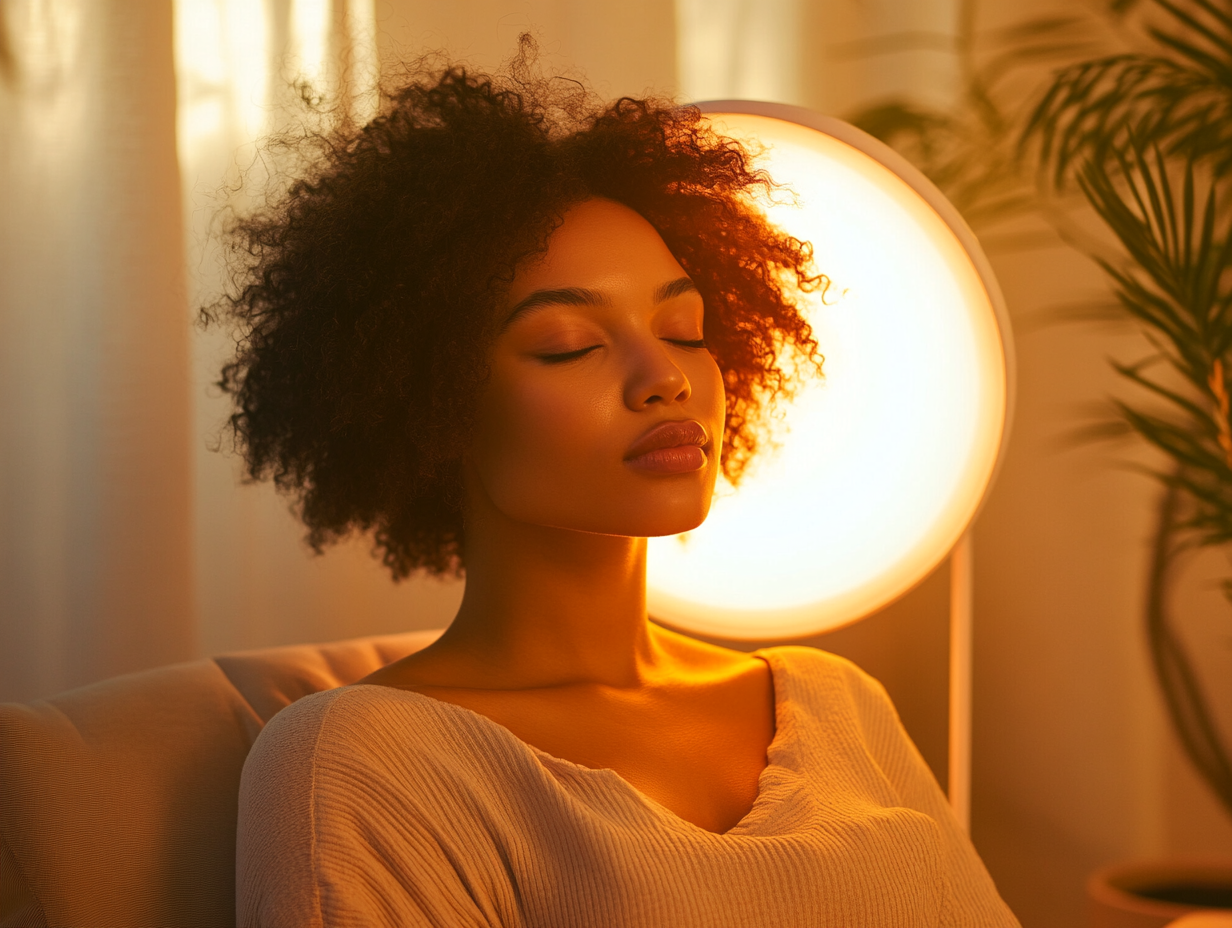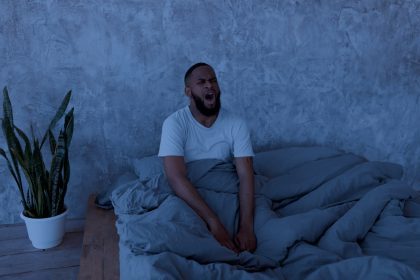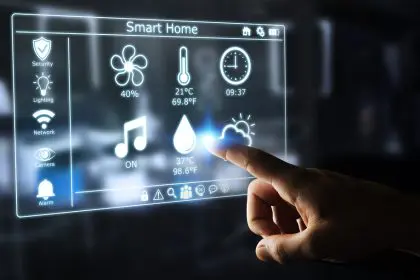Bright light therapy, a revolutionary approach to mental health
Depression casts a long shadow over millions of lives, challenging traditional treatment paradigms. Emerging research reveals a groundbreaking intervention that promises hope beyond conventional medical approaches.
Neurological transformation
Bright light therapy goes beyond traditional treatments by utilizing controlled light exposure to influence the brain’s chemical processes and restore emotional balance. This innovative approach taps into the brain’s natural ability to regulate mood, sleep, and energy through light stimulation, offering a natural and non-invasive solution to combat depression and other mood disorders. The therapy works by stimulating neural pathways that are essential for mental wellness, providing a path for emotional healing and cognitive restoration without relying on pharmaceutical treatments.
Decoding depression’s complex landscape
Light therapy offers a comprehensive approach to mitigating the symptoms of depression through various mechanisms that target the root causes of the condition. These critical insights into how light affects the brain help to better understand its therapeutic potential:
- Neurochemical rebalancing: Light therapy helps balance neurotransmitters such as serotonin, which regulates mood and contributes to feelings of well-being.
- Mood regulation mechanisms: The therapy supports mood stabilization by enhancing serotonin production and reducing depressive symptoms.
- Circadian rhythm optimization: By regulating the body’s natural sleep-wake cycle, light therapy helps to restore proper sleep patterns, which are often disrupted in individuals with depression.
- Holistic mental health support: Light therapy promotes overall well-being by addressing not just the symptoms but also the underlying biological rhythms that influence mental health.
- Non-invasive treatment potential: Unlike traditional pharmaceutical treatments, light therapy is non-invasive and generally has minimal side effects, offering a safer alternative for many individuals.
Physiological mechanisms of light intervention
The scientific community has uncovered deep connections between light exposure and mental health, showing how light therapy impacts key biological processes:
- Serotonin production stimulation: Exposure to bright light increases serotonin levels, a neurotransmitter that plays a major role in mood regulation and emotional stability.
- Melatonin regulation: It helps regulate melatonin, a hormone that controls sleep cycles and can improve sleep quality, crucial for overall mental health.
- Neurological reset capabilities: Light exposure can help reset the brain’s neural circuits, facilitating better emotional processing and stability.
- Emotional balance enhancement: The therapy aids in restoring emotional balance by influencing the brain’s chemistry, reducing mood swings and feelings of anxiety or sadness.
- Energy level optimization: By stimulating brain activity and improving mood regulation, it helps increase energy levels and reduce feelings of fatigue commonly experienced with depression.
Practical implementation strategies
For light therapy to be effective, it’s essential to follow a structured protocol to ensure optimal results. Here are the key recommendations:
- Device selection: Choose light therapy devices that provide 10,000 lux of light, which is the recommended intensity for therapeutic effects. Ensure the device is medical-grade and suitable for at-home use.
- Ensure proper distance and positioning: Position the light box at the correct distance from your face, typically around 16 to 24 inches, for the most effective exposure.
- Verify medical-grade specifications: Ensure that the light box meets the necessary standards for quality and safety to provide effective treatment.
- Treatment optimization: Morning exposure is typically most effective, as it helps regulate the body’s internal clock. Consistent 20-30 minute sessions should be maintained for best results.
- Monitor individual response patterns: Track your response to light therapy to determine the most effective duration and intensity. Adjust the protocol based on how you feel and your personal needs.
Beyond seasonal limitations
While it is often associated with treating Seasonal Affective Disorder (SAD), its benefits extend far beyond that:
- Effective for year-round depression: Light therapy has been shown to be effective in treating depression throughout the year, not just during winter months.
- Alternative to traditional medications: Light therapy offers a drug-free option for managing depression, making it an attractive alternative for those who cannot tolerate or wish to avoid pharmaceutical treatments.
- Complementary treatment approach: Light therapy can be used alongside other treatments like therapy or medication to enhance overall outcomes and improve mental health.
- Minimal side effect profile: Compared to antidepressant medications, light therapy generally has few side effects, making it a safer choice for many people.
- Accessible intervention method: Light therapy devices are widely available for home use, making it an easily accessible treatment for individuals seeking mental health support.
Holistic mental health considerations
Emerging research shows that light therapy is most effective when used in conjunction with other strategies to support mental health:
- Neurological functioning: Its ability to regulate neurotransmitters and improve sleep plays a crucial role in maintaining neurological health.
- Environmental influences: Factors such as exposure to natural light, daily routine, and social connections can further enhance the benefits.
- Individual psychological resilience: Light therapy supports emotional resilience by reducing the impact of stress and anxiety on mental health.
- Treatment responsiveness: Individual responses to light therapy may vary, so it’s important to tailor the treatment to each person’s specific needs.
- Personalized healing approaches: Combining light therapy with other personalized wellness practices, such as physical activity, proper nutrition, and therapy, will maximize its benefits for mental health.
Navigating treatment complexities
Before beginning light therapy, it’s essential to take certain considerations into account to ensure its effectiveness:
- Consult healthcare professionals: Speak with a healthcare provider to ensure it is appropriate for your condition and to understand how to integrate it into your overall treatment plan.
- Understand individual health context: People with certain medical conditions may need to take extra precautions, so it’s important to understand how light therapy interacts with individual health needs.
- Develop personalized treatment strategies: Tailor the sessions to your personal needs, adjusting the duration, timing, and intensity based on individual responses.
- Maintain realistic expectations: While it has shown promising results, it’s important to remember that it may not work for everyone. Set achievable goals and be patient with the process.
- Embrace comprehensive wellness approach: Light therapy should be part of a broader mental health strategy, which includes emotional support, physical activity, and healthy lifestyle choices.
Conclusion
Bright light therapy emerges as a promising frontier in mental health treatment. By understanding its intricate mechanisms and potential, individuals can explore a nuanced approach to emotional wellness that transcends traditional medical interventions.
















